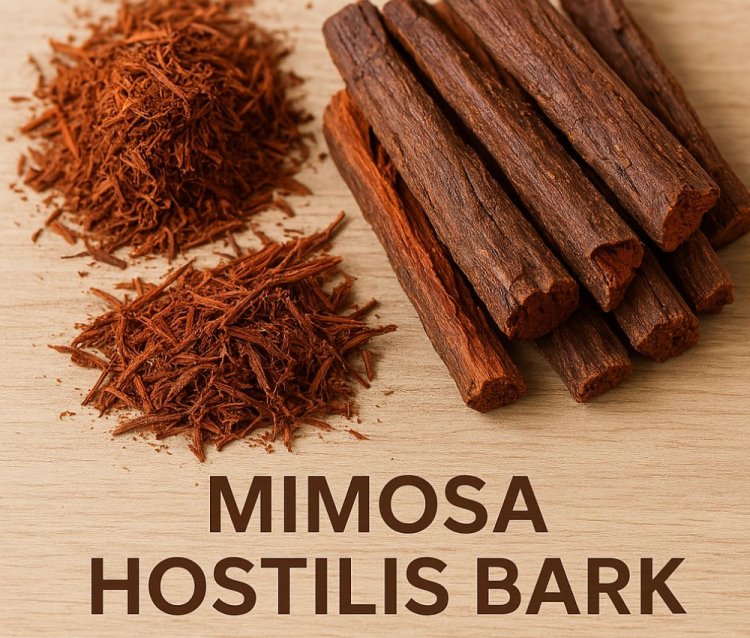Mimosa Hostilis Bark: From Natural Remedies to Artisanal Dyes
Explore Mimosa Hostilis bark’s uses, from natural remedies to artisanal dyes. Discover its health, eco-friendly, and artistic applications in this comprehensive guide.

When it comes to natural resources with a rich cultural history and diverse applications, few can rival Mimosa Hostilis bark. Known for its medicinal properties and vibrant dyeing capabilities, this botanical marvel has been celebrated for centuries by indigenous communities and artisans alike. But what makes Mimosa Hostilis bark so versatile, and how can it be used in modern contexts? This blog explores its fascinating history, applications, and benefits, from traditional remedies to stunning artisanal creations.
What is Mimosa Hostilis Bark?
Mimosa Hostilis, also known as Jurema, is a tree native to South and Central America, especially Brazil and Mexico. Its bark is what truly sets it apart. Packed with active compounds, the bark has been cherished for centuries for its medicinal, cosmetic, and artistic applications.
The bark is rich in tannins, flavonoids, and other natural compounds, making it an excellent base for everything from medicinal tinctures to natural dyes. Whether you're interested in holistic remedies or sustainable artistry, Mimosa Hostilis bark has something extraordinary to offer.
The Cultural and Historical Significance of Mimosa Hostilis
The uses of Mimosa Hostilis bark date back to ancient times, closely tied to indigenous rituals and daily life:
-
Traditional Medicine: Indigenous cultures relied on Mimosa Hostilis bark for its antibacterial and anti-inflammatory properties. It was used to treat cuts, burns, skin infections, and even digestive issues. With modern studies validating many of these benefits, it’s clear that the bark’s healing potential is more than just folklore.
-
Spiritual Rituals: Mimosa Hostilis holds immense significance in spiritual ceremonies. The bark is often used in traditional healing practices and as a component in sacred brews due to its connection to purification and renewal.
-
Natural Dyeing: Indigenous artisans have long harnessed the bark's vibrant pigments to create deep, earthy tones for textiles and crafts. The rich purples and reds derived from its natural tannins continue to captivate modern artisans today.
Understanding the historical roots of Mimosa Hostilis is key to appreciating its remarkable versatility and value.
Health and Medicinal Uses of Mimosa Hostilis Bark
1. Accelerating Wound Healing
One of the most well-documented traditional uses of Mimosa Hostilis bark is in wound care. Its high tannin content aids in the formation of a protective layer over cuts or burns, reducing the risk of infection and promoting natural healing. Studies have shown that the bark’s antibacterial properties help stave off common pathogens, making it an effective natural remedy.
2. Skin Benefits in Modern Cosmetics
From luxurious face masks to soothing balms, Mimosa Hostilis extract is increasingly appearing in natural skin care products. It’s known to:
-
Reduce redness and inflammation.
-
Treat skin conditions like acne and eczema.
-
Promote collagen production for youthful, glowing skin.
For this reason, it’s a sought-after ingredient in organic and cruelty-free beauty products.
3. Internal Health Benefits
While less common in modern usage, traditional medicine used Mimosa Hostilis bark to treat digestive issues and detoxify the body. Holistic practitioners today often explore its potential in herbal teas and tinctures designed to support overall wellness.
Mimosa Hostilis in Art and Design
1. Natural Dye for Textiles
One of the most beloved uses of Mimosa Hostilis bark is as a natural dye. Artisans have used its rich pigment to create stunning colors that range from vibrant magentas to soft purples, depending on the dyeing process and the material used.
This eco-friendly dye has become a favorite among sustainable fashion designers eager to move away from harsh synthetic dyes. It pairs beautifully with organic fabrics like cotton, wool, and silk.
2. Stunning Visual Effects in Art
Artists working with natural materials often use Mimosa Hostilis bark for its unique visual textures and colors. Mixed into paints or applied as a staining agent, it offers a distinct, earthy quality that enhances any work of art.
3. Eco-Friendly Craftsmanship
Because Mimosa Hostilis bark is biodegradable, it plays a key role in eco-conscious design projects. From handcrafted pottery glazes to decorative papers, its vibrant hues and natural composition make it a popular choice in sustainable creative projects.
Ethical Sourcing of Mimosa Hostilis Bark
As demand for Mimosa Hostilis grows, it’s crucial to ensure it’s sourced ethically. Overharvesting can lead to deforestation and environmental imbalance. Look for suppliers who actively engage in sustainable practices, including:
-
Replanting efforts to replace harvested trees.
-
Partnering with local communities to provide fair wages.
-
Transparent sourcing practices to ensure the bark is obtained without harm to its native ecosystems.
By choosing responsibly sourced Mimosa Hostilis, you help protect the environment and support the livelihoods of the communities who cultivate it.
How to Use Mimosa Hostilis Bark in Your Life
Curious about incorporating Mimosa Hostilis into your routine? Here are a few practical ways to explore its potential:
1. DIY Natural Dyeing Projects
Gather some fabrics (cotton or silk work well) and experiment with creating rich, vibrant shades using Mimosa Hostilis bark. Try tie-dyeing, shibori, or creating patterns for eco-friendly clothing and accessories.
2. Skin Care Creations
Create a luxurious at-home face mask by combining Mimosa Hostilis bark powder with natural ingredients like honey, yogurt, or aloe vera.
3. Herbal Teas and Tinctures
If you’re interested in exploring its wellness benefits, look for herbal teas or tinctures featuring Mimosa Hostilis to support skin and overall health.
Why Mimosa Hostilis Still Matters Today
The enduring popularity of Mimosa Hostilis bark speaks to its unparalleled versatility and cultural importance. Whether you’re a designer seeking sustainable materials, a natural health enthusiast, or simply someone captivated by its vivid hues, this remarkable bark offers countless possibilities. It bridges the gap between tradition and innovation, proving that the wisdom of the past is more relevant than ever.
If you’re ready to explore the world of Mimosa Hostilis bark for yourself, start with trusted and sustainable sources to experience its beauty and benefits firsthand.
What's Your Reaction?


















.jpg)
